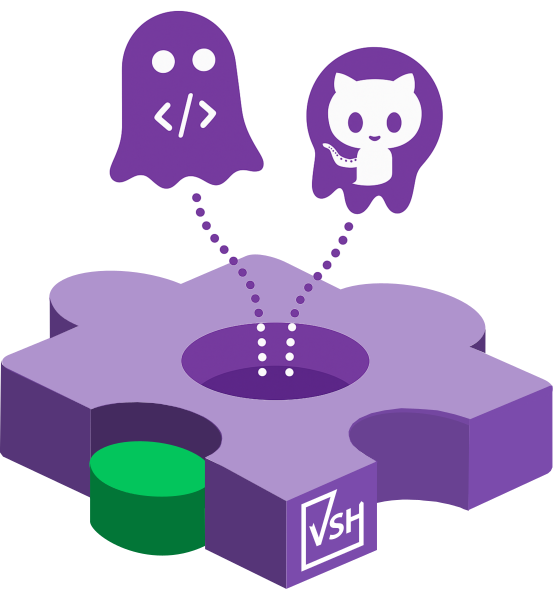Each summer a familiar scene repeats itself across research groups and R&D units: students graduate, postdocs move on, contractors wrap up. Along with them vanishes a wealth of computational know-how: code snippets vanish into personal GitHub accounts, untracked storage devices, or deprecated virtual machines.
This phenomenon - what we might call the “GitHub graveyard” - is one of the most pervasive yet underaddressed challenges in computational research. Every departing researcher leaves behind a trail of potentially valuable code that, without proper preservation and packaging, becomes nearly impossible to locate, understand, run or re-use.
Enter Viash: A Sustainable Solution
At Data Intuitive, we’ve developed a different strategy for addressing this challenge. Rather than expecting researchers to become software engineering experts, we’ve created tools that make robust packaging and reproducibility accessible to anyone.
Viash is a CLI tool that transforms any script - whether it’s a ten-line Bash helper or a complex multi-language workflow - into a standardized, portable component. By wrapping scripts in a standardized interface, Viash addresses many of the common failure modes that consign code to the GitHub graveyard:
Environment Isolation: Viash lets you define your exact environment: dependencies, OS, and I/O configurations - ensuring your script runs the same way today, tomorrow, or five years from now, regardless of the host-system.
Standardized Interfaces: Viash is a CLI tool that exposes a consistent interface for every component, removing the guesswork of how to run a tool or what input and parameters it expects.
Multi-Platform Compatibility: Viash components are fully self-contained, meaning they run seamlessly across platforms - whether it’s your laptop, an HPC cluster or in the cloud - without the need for refactoring or environment-specific adjustments.
Built-in Documentation: Documentation is packaged with the component, so users always have clear usage instructions, parameter descriptions, and context that remains coupled to the code itself.
From Prototype to Production
Viash bridges the gap between research prototypes and production-ready tools. Consider the example of the graduating student that we mentioned earlier. With Viash, the student could package their work in a matter of hours, creating a component that:
- Runs identically on any system - from local machines to cloud environments
- Includes comprehensive, built-in documentation
- Preserves the exact environment to ensure results remain consistent, even years later
- Exposes a clear, standardized interface making it easy to reuse the tool by others
- Integrates seamlessly into larger workflows
- Is built for scalability, compliance, and long-term maintainability
What’s preserved isn’t just code - it’s a computational asset that can be built upon, reused and trusted.
Building a FAIR Computational Commons
Viash is more than a tool - it’s the motor of a broader ecosystem designed for FAIR (Findable, Accessible, Interoperable, Reusable) computational research.
Viash Hub was developed to support this vision: a platform that enables communities to govern, share, and maintain high-quality computational components. Rather than having each research group maintain its own collection of tools, the community can build upon a shared foundation of well-tested, well-documented components under proper governance oversight.
This approach has demonstrated value in pharmaceutical R&D settings, where regulatory compliance and reproducibility are essential. But the same principles that make Viash valuable for industrial applications - reliability, traceability, and maintainability - benefit academic research as well.
The Path Forward
The GitHub graveyard exists in part because academic incentives reward novelty over sustainability. Scientific publications often prize novel methods rather than robust implementations, and researchers advance careers by breaking ground, not building infrastructure.
Viash doesn’t fix the incentives, but it lowers the barrier to robust, sustainable and shareable research.
The GitHub graveyard exists in part because academic incentives reward novelty over sustainability.
By making reproducibility and packaging simple, it lets researchers add long-term value with minimal effort. And by exposing ground-breaking tools in the Viash Catalogue, it becomes part of a growing ecosystem of reusable components, ready for use by a larger community to power the next community.
Getting Started
Whether you’re an academic researcher with a collection of useful scripts or part of an R&D team trying to standardize your computational workflows, Viash offers a practical, low-friction path to reusability. The tool is designed to work with existing code and development practices, without requiring major rewrites or steep learning curves.
We believe that robust knowledge management should be the rule rather than the exception. After a light-touch quality review, your packaged tool can be added to the Viash Catalogue, where it becomes discoverable, traceable and potentially the next component adopted by industry.
The GitHub graveyard isn’t inevitable. With the right tools and a commitment to preserving computational knowledge, we can build a more sustainable, collaborative future for scientific computing.
